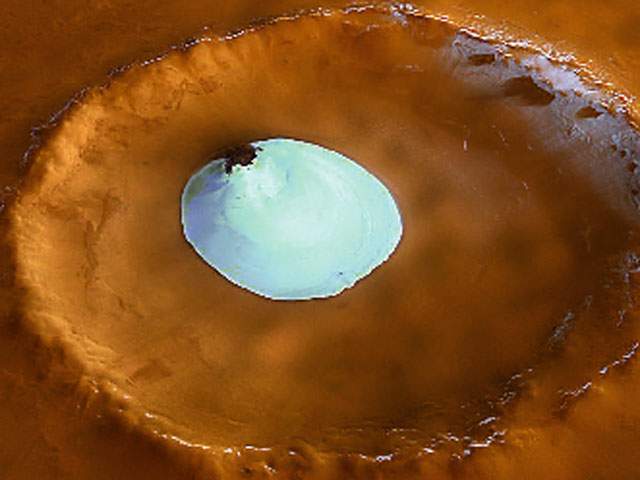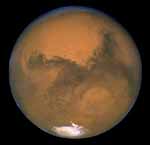|
|
| Asteroid could hit Mars
next month: NASA
LOS ANGELES (AFP) — An asteroid hurtling towards Mars has a one in 75 chance of chance of scoring a direct hit on the red planet next month, NASA experts said in a statement Friday. The US space agency's Near Earth Object Program (NEOP) revealed that the asteroid's exact course was difficult to predict, but said it could slam into Mars on January 30, leaving a crater measuring an estimated 1 kilometer across. If the asteroid, which has been named 2007 WD5, missed Mars as expected it could return to swing past Earth years or decades later, but there was no indication of a threat to the planet, scientists said. A collision with Mars would be likely to send an enormous dust cloud into the planet's atmosphere. The exact path of the asteroid, which was discovered in November by the NASA-funded Catalina Sky Survey near Tucson, Arizona, was becoming increasingly difficult to observe because it was receding from the Earth, scientists said. The asteroid, believed to measure around 50 meters (160 feet) across, had already passed within 7.5 million kilometers (5 million miles) of Earth in early November.
"Normally, we're rooting against the asteroid (if it is threatening Earth)," Chesley said. "This time we're rooting for the asteroid to hit." Greenhouse clue to water on Mars A new idea could explain how the climate of early Mars became warm enough to support oceans. Scientists believe sulphur dioxide released from ancient volcanoes created a balance similar to Earth's carbon cycle, which controlled the climate. The notion, outlined in the journal Science, could explain why Mars rovers have found sulphur minerals on the surface but no limestone like on Earth. It may also provide clues to how life evolved on our own planet. "Before the origin of
life, our atmosphere may have looked much like early Mars," said Daniel
Schrag, lead author of the Science paper. "Sulphur dioxide may have had
an important role then as well."
Evidence of liquid water on the surface of Mars roughly 3.8 billion years ago implies that although its surface temperature now averages -51 degrees Fahrenheit (-46 degrees Celsius), it was once relatively warm. Scientists have often proposed the red planet was enveloped during its youth in an atmosphere rich in carbon dioxide. Carbon dioxide is a "greenhouse gas," meaning it traps heat from the sun, warming up worlds such as Earth. |
|


|
| What is a Solar system |
| LUNAR COLLECTION | SOLAR COLLECTION | MARS | Home |
| India, New Delhi From Space |
|
|
|
|
|
|
|
|
|
|

Welcome to Swami Rajesh Chopra's |

|
( The Trade Marks Act, 1999, No. 01403083. User Since : 01/04/1997 ) All rights reserved. No part of this publication and other sites of under liveindia.com may be transmitted or reproduced in any form or by any means without prior permission from the publisher Live India Internet Services or Rajesh Chopra, L.C.Premium Cables, 1826, Amar Nath 2nd Building, Bhagirath Palace Delhi - 110006, India. Liveindia.com or Mr.Rajesh Chopra is not responsible for any wrong information under this site, For confirmation of any information it is recomended that you can reconfirm from yours end. |
 |